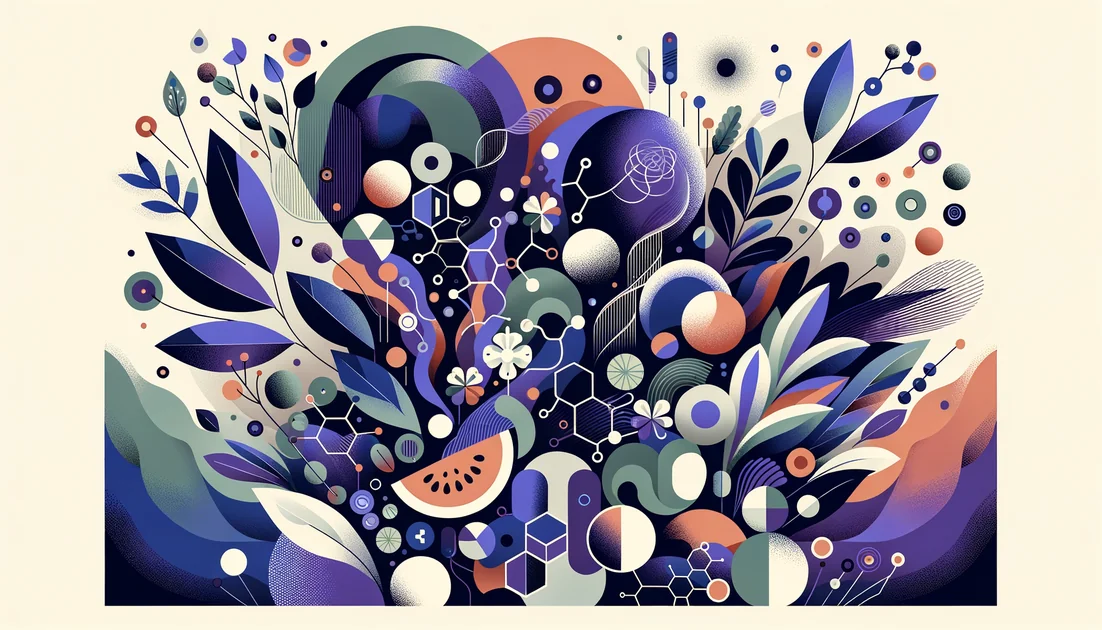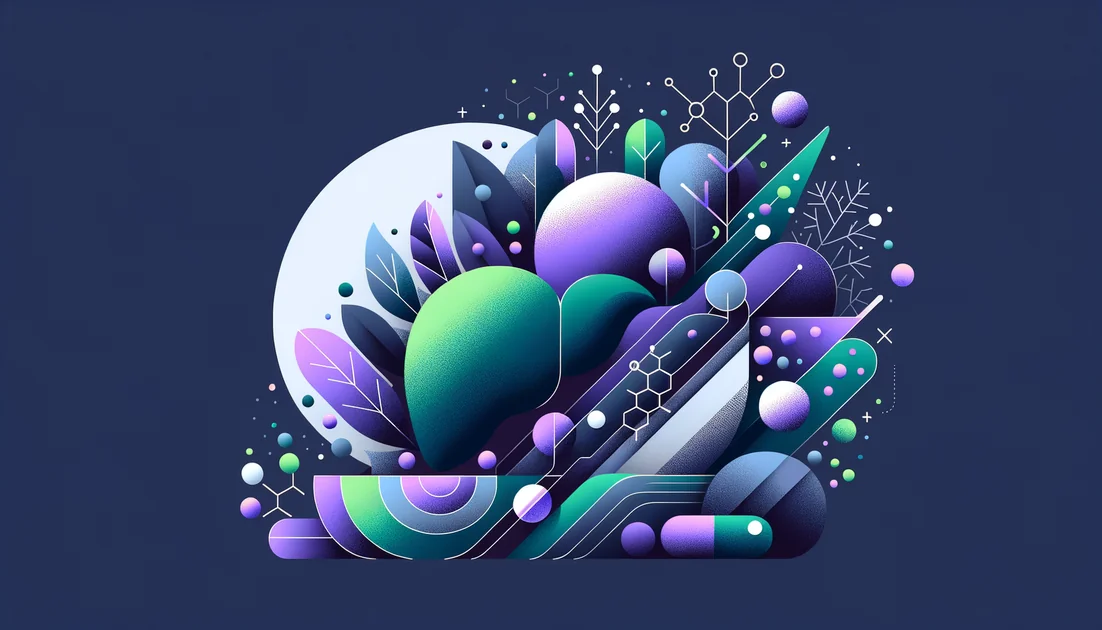
From Watermelon Rinds to Wider Arteries: How L-Citrulline Turned a Curiosity into a Cardiometabolic Tool
In 1914, two Japanese chemists pulled an unfamiliar amino acid from watermelon rinds. A century later, that same molecule—L-citrulline—would reveal a paradox: it raises the body's arginine levels better than swallowing arginine itself, nudging blood vessels to relax and sometimes performance to rise. [1][5]
- Evidence
- Promising
- Immediate Effect
- Within hours (exercise dosing shows acute effects) → 3–6 weeks for blood pressure/arterial metrics; ~4 weeks in mild ED
- Wears Off
- 2–4 weeks after stopping, benefits diminish
A rind, a cycle, and a revelation
Watermelon's Latin name—Citrullus—gave citrulline its name when Yatarō Koga and Ryō Ōtake first isolated it from the fruit in 1914. They couldn't yet see where it fit in human biology. That picture sharpened in 1932, when Hans Krebs and Kurt Henseleit mapped the urea cycle, placing citrulline as a pivotal handoff in how our bodies detoxify ammonia. Decades later, the vascular science revolution of 1987 identified nitric oxide as the artery-relaxing signal made from arginine—producing citrulline as a by-product. Suddenly, the watermelon molecule belonged to two grand stories: waste removal and blood flow. [1][2][3][4]
The paradox that made citrulline famous
Here's the twist: taking citrulline often boosts blood arginine more effectively than taking arginine. Why? Arginine is partly broken down by "tollbooth" enzymes in the gut and liver; citrulline slips past, reaches the kidneys, and is quietly turned into arginine that circulates to the arteries. In healthy volunteers, week-long citrulline dosing raised arginine levels dose-dependently and shifted chemistry toward more nitric-oxide signaling; arginine pills did less. [5][6]
"Watermelon is the richest edible natural source of L-citrulline.. essential to the regulation of vascular tone and healthy blood pressure," said Florida State's Arturo Figueroa. [17]
What real studies show
Blood pressure and arterial function
Small randomized trials from Figueroa's group used watermelon extract supplying about 6 g/day of citrulline/arginine for 6 weeks. Results: improved aortic hemodynamics and lower systolic pressures, suggesting the pressure "echo" rebounding through stiff vessels softened. Similar benefits appeared in obese adults with prehypertension or hypertension. Meta-analyses since then are mixed but lean positive: a 2019 review found citrulline lowered brachial blood pressure in several contexts, and a 2025 synthesis of 15 RCTs in middle-aged/older adults estimated average reductions of ~4/2.5 mm Hg—larger when citrulline was paired with arginine. [7][8][9][10]
Sexual function: modest help for the mild cases
In a single-blind pilot trial (n=24) of men with mild erectile dysfunction, one month of L-citrulline (1.5 g/day) improved erection hardness to "normal" in 50% versus 8% on placebo; intercourse frequency also rose. A follow-up crossover pilot combining low-dose citrulline (0.8 g/day) with transresveratrol on top of a PDE5 inhibitor nudged questionnaire scores upward. These studies are small and don't rival prescription drugs, but they point to a safe, physiological nudge for men with mild symptoms or PDE5 partial responders. [11][12]
Exercise and recovery
For high-intensity effort, a single pre-workout dose of citrulline malate (typically 8 g) has repeatedly helped lifters squeeze out extra reps and report less next-day soreness. A meta-analysis confirms reduced perceived exertion and soreness, though endurance outcomes are inconsistent. One 16-day trial of watermelon juice (≈3.4 g/day citrulline) boosted nitric-oxide markers without improving time-to-exhaustion, underscoring that performance gains seem most reliable in repeated, heavy efforts rather than steady-state endurance. [13][15][14]
Culture meets chemistry
Traditional Chinese medicine has long used watermelon rind (Xi Gua Pi) to "clear summer heat." Modern analyses show citrulline is indeed concentrated in rind, especially in yellow or orange-fleshed varieties—an old practice now legible through new biochemistry. [16]
Voices—and a reality check
Texas A&M's Bhimu Patil once quipped, "The more we study watermelons, the more we realize just how amazing a fruit it is," noting citrulline's vessel-relaxing potential. Those lines fueled splashy headlines about "natural Viagra," but the evidence supports something humbler: small improvements in vascular tone and, in mild ED, modest gains—not a drug-like effect. [18][11]
How people actually use it
For blood pressure/arterial stiffness: many studies used 3–6 g/day L-citrulline (or watermelon extract delivering similar amino acids) for 4–8 weeks. Effects, when present, tend to be a few mm Hg—useful as an adjunct to diet, activity, and prescribed care. [7][8][10]
For training days: 6–8 g citrulline malate about 30–60 minutes pre-lift is common in research; some split plain L-citrulline 3 g morning/3 g pre-workout. [13]
For sexual function: the ED pilot used 1.5 g/day for one month; combination strategies (low-dose citrulline plus other agents) are being explored. [11][12]
For synergy: combining citrulline with arginine can spike arginine faster than either alone, though not all settings require it. [22]
A clinical footnote: in inherited urea-cycle disorders, citrulline isn't a wellness supplement—it's part of medical therapy to maintain arginine supply and control ammonia. In that context, guidelines recommend pharmaceutical-grade products under specialist care; tragic recalls have shown the stakes when products are impure. [20][21]
What's next
Researchers are testing whether citrulline's benefits depend on the "traffic conditions" inside our vessels—like levels of ADMA, a brake on nitric-oxide production. A 2024–2025 PAD trial is stratifying patients by this signal to see who walks farther on citrulline (with or without a nitric-oxide cofactor). Early pilot work in heart failure with preserved ejection fraction hints that even seven days of citrulline can nudge endothelial function and six-minute walk distance—signals worth confirming in larger, longer studies. [7][9][10][23]
The quiet lesson of a summer fruit
From a rind in 1914 to today's pre-workouts and cardiometabolic trials, citrulline's story isn't about miracles—it's about leverage. By slipping past the gut's tollbooths and quietly refilling the arginine tank, it helps arteries loosen their grip and muscles feel a bit fresher. As evidence accrues, watermelon's old wisdom is being translated into careful, modern practice. [1][5][16][19]
Key takeaways
- •Citrulline's paradox: it elevates blood arginine—and downstream nitric oxide—more efficiently than oral arginine, linking a urea-cycle intermediate to vascular tone.
- •Blood pressure: weeks of citrulline or watermelon can produce small average BP reductions, with larger effects reported when combined with arginine in trials.
- •Performance: acute citrulline malate can boost high-intensity lifting volume and lessen next-day soreness; endurance results are mixed.
- •Practical dosing: 3–6 g/day L-citrulline for vascular goals; 6–8 g citrulline malate 30–60 minutes pre-lifting; 1.5 g/day was used in a mild-ED pilot.
- •Timing tips: split daily doses for vascular aims; take pre-workout for acute gym benefits.
- •Cautions: discuss use if on nitrate medications or with low/unstable BP; seek medical guidance in advanced kidney disease since kidneys convert citrulline to arginine.
You might also like
Explore more of our evidence-led investigations, comparisons, and guides across every article style.

NutraBio
NutraBio: The Transparency Standard—with Prices That Mostly Add Up

Marine collagen peptides (fish-derived) vs Bovine collagen peptides (hide-derived)
Pick marine if you avoid land animals or value potential sustainability; pick bovine if you want lower cost and the same evidence profile. Clinically, source doesn't clearly change outcomes. [1][2]

Best for Fatty Liver (NAFLD/MASLD and NASH)
Omega-3s (EPA/DHA)

Ubiquinone (Coenzyme Q10)
A young scientist notices a strange yellow tint in a cauliflower extract—and, by following that color, helps uncover a molecule that would one day divide cardiologists, disappoint neurologists, and quietly change a few lives.

Memory Stack With Real Clinical Data
Dual-core, theoretical synergy: both work on their own; together looks additive with plausible complementarity, but no direct human A+B head-to-head proof yet.

Tocotrienols
The stealthier cousins of vitamin E—built with springy tails that move differently in cell membranes and behave differently in your body.
